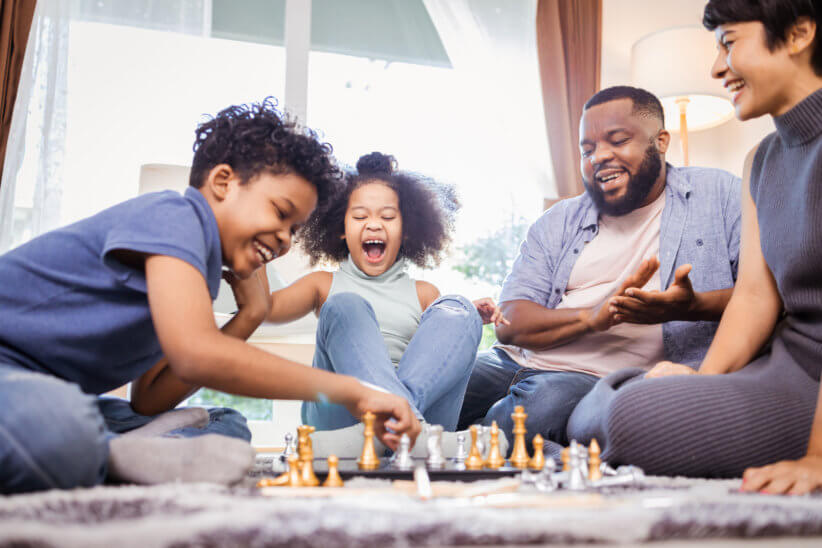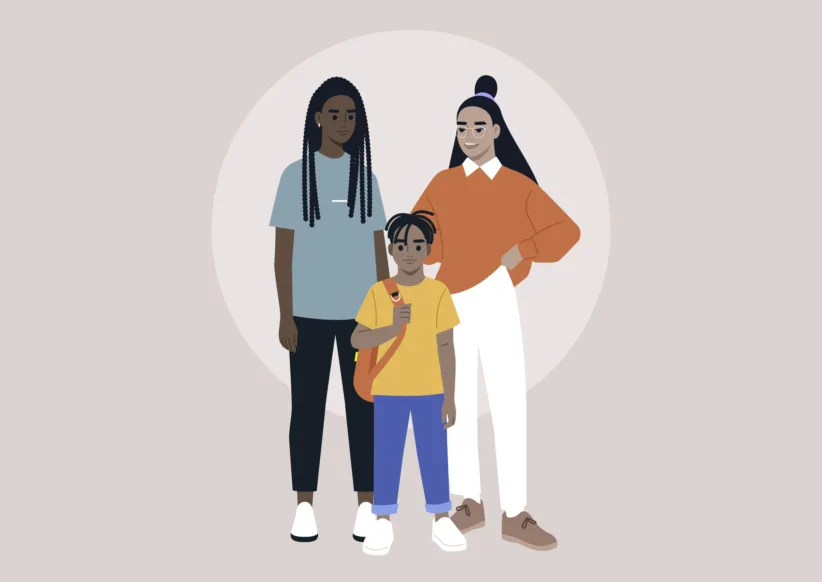My sister and I were born 13 months apart. We didn’t really suffer from sibling rivalry — what was mine was clearly her’s, and vice versa, without question. I do not know a life or a way of being that does not include her.
However, we are as vastly different as two people can be, not only physically (I’m 5’8 and she’s 5’4; she’s blond and I’m not), but in the way we approached and functioned in school — as were many siblings before and after us. I was an avid reader, greatly preferring books and low-key activities (chess, puzzles), while she ran straight into any physical activity she could (she was actually on a pre-Olympic gymnastics team and one of her fellow gymnasts participated in the 1980 Olympics).
The comparisons were inevitable and typical. I was tall and awkward, but made straight As, while she was small and lithe and was banished to the resource room — as were most kids who were non-typical learners, and therefore, labeled learning disabled in the 1970s and ’80s.
I remember the first day we moved into a new school — my sister and I had to take placement reading tests in order to see where we fit among the three classes on our respective grades. I placed in the middle grade because, while I may have been a great student, it was very intimidating sitting in the principal’s office, under scrutiny of the third grade teacher, the principal, and my parents, while trying to read passages and answer questions.
My sister, a shaky test taker from the beginning, tested into the lower class. She ended up developing low educational self-esteem because of the low abilities and bad behaviors of the other students in her class. To her, and obviously to the school, she wasn’t able — able to read well, to write well, or to be a good student.
But, here’s the thing: she was. Every child is — the key to learning just needs to be uncovered.
And it wasn’t until I first read about Dr. Howard Gardner’s Theory of Multiple Intelligences way back in my undergraduate days that I understood this and put into perspective the great differences in our educational experiences, and my sister’s great difficulties in school. My sister wasn’t a bad student, she just needed a different approach to learning than what schools at that time were using.
The theory illustrates the many ways in which a person can learn and process information. There are currently eight widely-accepted intelligences, and they are:
• Visual/spatial intelligence: People who are visual/spatial learners are great at visualizing and representing their ideas in 3-D, are great with puzzles, and may grow up to become engineers, architects and artists. They tend to need to incorporate concrete examples when they learn, such as drawing a scene from a play if they are reading Shakespeare, or creating a replica of the Eiffel Tower if they are learning about France.
• Linguistic intelligence: People who are linguistic learners are great with words, both written and spoken. They love to play with words and find reading a pleasurable activity. In order for them to learn, they need to include note taking or journal writing when they are learning.
• Logical-mathematical: People who are logical-mathematical learners tend to be great at reasoning and logic. Math and science are also strengths for these learners, as they approach learning in an investigative way, asking a lot of questions and applying their reasoning powers.
• Bodily-kinesthetic: People who are bodily-kinesthetic learners need to incorporate movement into their learning. They retain information when there is an action incorporated into the lesson. They often need to touch something or physically do something (creating a muscle memory) for it to become meaningful.
• Musical: Musical learners tend to be sensitive to noises, music, rhythms and patterns. They need to incorporate music (whether it is by singing, dancing, or moving) in order to learn something and create a memory. You will often find these learners tapping their feet when they are listening to someone talk and creating their own songs from what they are hearing so that they can better understand it.
• Interpersonal: Interpersonal learners tend to be the social butterflies of any group. They learn best by transmitting information to others and having others interact with them. Very extroverted, interpersonal learners are empathetic and do well in groups of people.
• Intrapersonal: People who are intrapersonal learners are highly intuitive and seen as shy or quiet. They have a keen ability for self-reflection, and tend toward working alone rather than in groups.
• Naturalistic: Naturalistic learners love to be in nature and study best when the natural world is involved.
Dr. Gardner did not primarily develop his theory for education, but the educational world has wholeheartedly embraced it. It makes the vocation of teaching and parenting a little easier if a teacher or parent understands the ways in which children see and approach their worlds.
While there is usually a base type of intelligence, many of us do exhibit a combination of intelligences, and that is why it is so important that when teachers and parents approach any type of activity — whether it be reading, disciplining, teaching, or playing — they include a variety of ways to approach it.
Now, as an educator, I often look back on the pair of us and our educational and personal paths, and use it to inform my educational theories. And it is because of this that I have always aimed at providing my students with lessons that were developed with many different learning styles in mind. I usually didn’t plan lessons until I got to know my students and the different styles they offered. I made sure to include activities or projects that would help me uncover the way they learned, and offered them a multitude of ways to access the different centers or projects in our class. This was easy in a preschool environment, but maybe not so much so in a higher elementary grade.
On the first day of class, I designed my classroom to provide opportunities for small and large group, as well as individual activities (listening center, playdough, reading nook). During circle time or whole group work times, I allowed for the different ways a child may need to access the circle or whole group experience. A child was allowed to sit at the table, sit at the circle in a chair, sit holding a stuffed animal, or stand, as long as he wasn’t disrupting the class.
When I first started teaching, I had a little girl in my class who was so sensitive to music that she was terrified of the music teacher. After bringing her outside of the classroom to calm down a few times, the music teacher and I decided that it was best for her to sit at the door in a chair. But, by the end of the music time, she was usually in the circle dancing with the other kids.
To be honest — this does create more work at first, especially doing this for an entire class. But, as a preschool teacher, I found that approaching teaching in this way, creating lessons to include as many of the ways of learning as I could, challenged me and help me become a better teacher.
And now, I see this with my own parenting style. My 3-year-old son is also highly sensitive to sound, but is extremely musically inclined (not to brag too much). He plays simple scales on his piano, and has started writing music with my husband, and on his own.
However, when he enters a room full of screaming kids (say, at an indoor play area), he sometimes has a hard time functioning. I feel that it is up to me — and those who take care of him — to understand his learning needs, and help him understand them as well. This will help him in school, and will make things a little easier for him when he comes across information that he just doesn’t understand.
We were taking music classes together at a local Music Together Studio, and after a few weeks, he just wasn’t able to handle it. There were too many elements for him to process, and while he loved the music, the surroundings became too much. My husband and I feel that our son does love music, and we want to encourage his natural abilities, so we plan on enrolling him in one-on-one music lessons. Being able to identify his way of learning helps me, especially when the challenging times come up. And trust me, they do come up!
My sister and I sat down and filled out an online questionnaire to find our learning styles. Sure enough, what we had already assumed was true — I’m a linguistic learner, and she’s a bodily/kinesthetic learner. I did the same for my son, and confirmed he is a visual/spatial and musical learner. I can’t wait for my husband to take the test!
Resouces
To find your learning style, visit literacyworks.org/mi/assessment/findyourstrengths.html.
To find your child’s style, visit www.scholastic.com/familymatters/parentguides/backtoschool/quiz_learnstyles/index.htm.
For more information on Dr. Howard Gardner, visit www.howardgardner.com.Nanine Iengo is an Early Childhood Educator and Administrator who is working toward her Professional Certification in special education. While taking a leave of absence from the working world to be home with her son, she has developed a parent participation class called Toddler Lit 101, which is aimed at giving all children a love of reading.





















